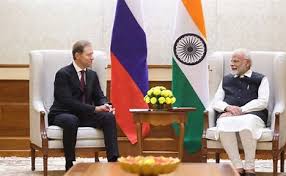 A wave of hedonistic consumerism is sweeping India. And all the fun is online – whatever you are tempted to buy is just a click away…. And no need to fear fraud in card transactions. In India, cash is king.
A wave of hedonistic consumerism is sweeping India. And all the fun is online – whatever you are tempted to buy is just a click away…. And no need to fear fraud in card transactions. In India, cash is king.
Welcome to the brave world of e-commerce.
What is fuelling the e-commerce boom?
On July 30, Flipkart, India’s largest homegrown e-commerce company, raised $1billion to boost its business. Within 24 hours, Amazon, the global e-retail giant, raised the stakes and announced grandly that it will pump in $2 billion in India. The battle for the massive e-commerce market in India is going to get more intense, even cutthroat, in days to come.
The e-commerce industry has been growing exponentially in the last few years. According to a report published by the global analytical company, Credit Rating Information Services of India Limited (CRISIL), e-commerce firms saw an annual growth rate of 56% in revenue between 2008-2013. The report also states that the Indian online retail industry saw an increase in revenue from around $ 1.5 billion in 2007-08, to over 13 billion USD in 2012-13, which translates into a compounded annual growth rate (CAGR) of over 56 percent. This growth has been attributed to structural changes in the way consumers communicate and shop.
Increasing internet users
The Internet and Mobile Association of India (IAMAI) estimated that by June 2014 there would be 243 million internet users in India, which would make India the world’s second largest internet base after China. Consulting firm McKinsey & Co. estimates that the number of users will grow to 500 million by 2015.
Yet the fact remains that more than four-fifth of the country’s population has no access to the internet. As that percentage of internet penetration increases the number of active internet user will also rise, pushing e-commerce forward, say some market analysts.
According to the research firm, eMarketer, internet penetration in the country has not crossed 18% of the population, making it the lowest internet penetration growth in Asia Pacific (APAC). However, the wheels are already turning: India leads the APAC region in terms of user growth, with a growth rate of 28.9% followed by Indonesia (14.9%), China (6%), Australia (1.7%), Japan (0.8%) and South Korea (0.7%).
Currently, only 26 percent of the total population online are buying and selling things on the internet. But as internet becomes more accessible and e-commerce floods the market with attractive offers, the surge is likely to endure.
Digital payment penetration
When it comes to paying, cash is king for Indians. Digital payments account for a very limited share of the market. However, this, too, is beginning to change. The IAMAI expects digital payment to touch Rs 1.2 trillion by December 2014, marking a 40% increase from Rs 85,800 crore in 2013.
Of this already limited share, only a meagre 12% accounts for online retail transactions, while 60% is accounted for by online travel accounts, and 23% is accounted for by financial services.
Liberalization of e-commerce
The quest for the right technology to expand e-commerce is continuing apace. According to a report by Ernst and Young India, “the rise in the number of internet users, growing acceptability of online payments, the proliferation of Internet-enabled devices and favourable demographics, are the key factors driving the growth story of e-commerce in the country.”
The government has taken the first steps towards raising the equity cap in e-commerce. In January, India’s Department of Industrial Policy and Promotion floated a discussion paper on allowing foreign funds in the sector. However, the government has reservations about the impact this will have on domestic players.
During his recent visit to New Delhi, US Secretary of State John Kerry also expressed his desire to see an increase in equity caps in e-commerce. Liberalising foreign investment restrictions would potentially activate a substantial influx in FDI, if it is coupled with the scrapping of the 30 percent sourcing requirement.
Nomura, a financial analyst firm, predicts that with this confluence of factors, the Indian e-commerce market will quadruple from $10 billion in 2013 to $43 billion by 2018. The consultancy, however, added that this surge will only be possible if it is backed by the growth of online retail, which it says will increase from $2 billion in 2013 to $23 billion in same time period.
Author Profile
- India Writes Network (www.indiawrites.org) is an emerging think tank and a media-publishing company focused on international affairs & the India Story. Centre for Global India Insights is the research arm of India Writes Network. To subscribe to India and the World, write to editor@indiawrites.org. A venture of TGII Media Private Limited, a leading media, publishing and consultancy company, IWN has carved a niche for balanced and exhaustive reporting and analysis of international affairs. Eminent personalities, politicians, diplomats, authors, strategy gurus and news-makers have contributed to India Writes Network, as also “India and the World,” a magazine focused on global affairs.
Latest entries
 India and the WorldNovember 26, 2025G20@20: Africa’s Moment – The Once and Future World Order
India and the WorldNovember 26, 2025G20@20: Africa’s Moment – The Once and Future World Order DiplomacyOctober 4, 2025UNGA Resolution 2758 Must Not Be Distorted, One-China Principle Brooks No Challenge
DiplomacyOctober 4, 2025UNGA Resolution 2758 Must Not Be Distorted, One-China Principle Brooks No Challenge India and the WorldJuly 26, 2025MPs, diplomats laud Operation Sindoor, call for national unity to combat Pakistan-sponsored terror
India and the WorldJuly 26, 2025MPs, diplomats laud Operation Sindoor, call for national unity to combat Pakistan-sponsored terror India and the WorldJuly 25, 2025When Fire Ends, Diplomacy Begins
India and the WorldJuly 25, 2025When Fire Ends, Diplomacy Begins







